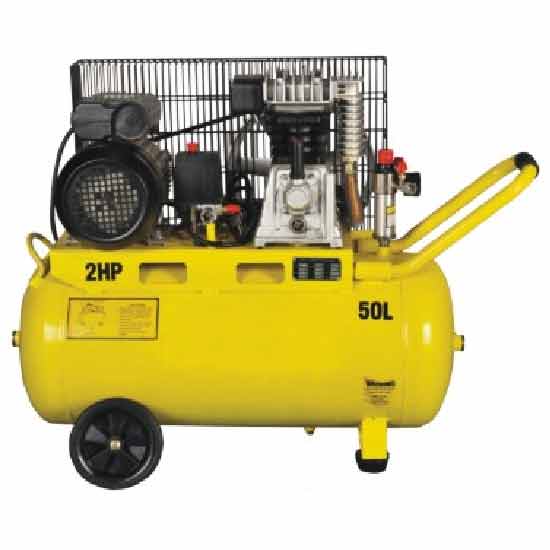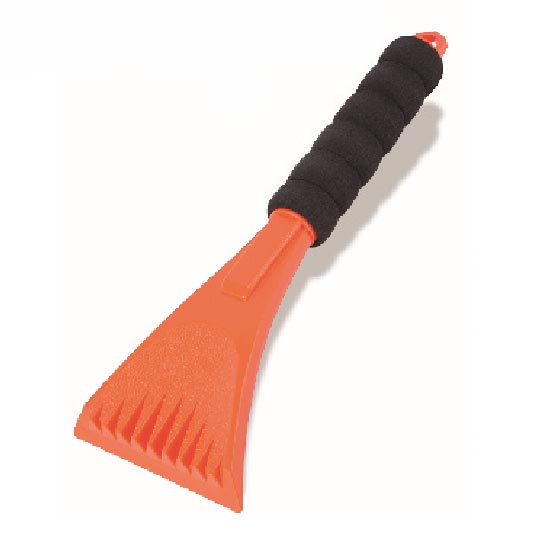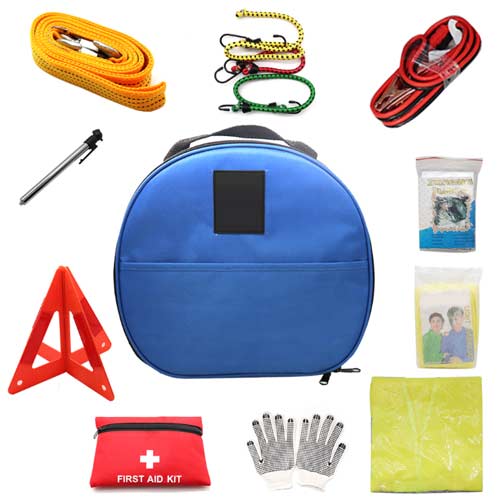Air compressors are essential tools in many industries, powering everything from pneumatic tools to equipment in factories and construction sites. However, like any mechanical equipment, air compressors can face issues that may cause disruptions in operations. Troubleshooting common problems quickly and efficiently can save time and reduce downtime. This guide will walk you through a quick and easy troubleshooting process for some of the most common air compressor issues.
If your air compressor isn’t starting, the issue could be related to several factors. Here's what to check:
Power Supply: Ensure that the compressor is plugged in and the power switch is turned on. Check the circuit breaker to ensure the system is receiving power.
Electrical Connections: Inspect the power cord for visible damage, and make sure all electrical connections are tight and free from corrosion.
Compressor Motor: If the motor is not turning on, it may be due to a burned-out motor, malfunctioning start capacitor, or tripped overload protection. Reset the overload, or replace the capacitor or motor if necessary.
If the compressor runs but doesn’t build up pressure, it can significantly affect performance. Here’s how to troubleshoot:
Check the Intake Valve: A stuck or faulty intake valve can prevent air from entering the compressor. Inspect the intake valve and clean or replace it if necessary.
Check the Pressure Switch: A malfunctioning pressure switch might prevent the compressor from turning on or off as needed. Inspect the pressure switch for any visible issues, and replace it if it's faulty.
Inspect the Unloader Valve: If the unloader valve is stuck, it can prevent the compressor from reaching the required pressure. Verify that the unloader valve is clean and functioning correctly.
Air Leaks: Inspect the entire air system for leaks. A leak can prevent the compressor from building pressure properly. Use a soapy water solution to identify any leaks, and tighten or replace any faulty components.
Direct-connected Portable Air Compressor
Overheating is a common issue, especially if the compressor is running for extended periods or is in a high-temperature environment. Here's how to address it:
Check for Adequate Ventilation: Make sure the compressor is in a well-ventilated area. Poor airflow can cause the compressor to overheat. Clean any dust or debris blocking the air intake or exhaust vents.
Change the Air Filter: A clogged or dirty air filter restricts airflow and can lead to overheating. Inspect and replace the air filter if necessary.
Inspect Oil Level (for oil-lubricated compressors): Low or dirty oil can cause friction inside the motor, leading to overheating. Check and replace the oil if it appears contaminated or low.
Check the Fan or Cooling System: A malfunctioning fan or cooling system could be the cause of overheating. Ensure the cooling fan is operational and the fins are free of dirt or debris.
If your air compressor is making strange noises, it could indicate internal issues. Common noise-related problems and their solutions include:
Loose or Worn Parts: Listen for rattling or grinding noises. Loose bolts, worn bearings, or damaged parts can cause these sounds. Tighten or replace the parts as needed.
Compressor Motor Noise: A loud motor can indicate a problem with the motor or the electrical components. Check the motor for signs of overheating, damage, or electrical issues, and consult a technician if needed.
Loose Piping or Hoses: Loose hoses or air lines may cause whistling or hissing noises. Tighten any loose fittings, and replace any damaged hoses.
If your compressor is cycling on and off too frequently, this could be a sign of various issues. Here's what to check:
Check the Pressure Switch Settings: The pressure switch controls when the compressor turns on and off. If the switch is malfunctioning or set incorrectly, it may cause frequent cycling. Verify the settings and adjust or replace the switch if necessary.
Inspect for Leaks: As mentioned earlier, air leaks in the system can cause the compressor to lose pressure and cycle frequently. Inspect hoses, connectors, and the tank for leaks.
Check for an Oversized Compressor: If the compressor is too large for the application or load, it may cycle on and off unnecessarily. Ensure the compressor is properly sized for your needs.
If the air produced by the compressor is dirty or contaminated, it could cause damage to tools or equipment. Here’s how to troubleshoot:
Check the Air Filter: A dirty or clogged air filter can introduce contaminants into the compressed air. Replace the filter if it appears dirty or damaged.
Check the Oil Level and Quality (for oil-lubricated compressors): Contaminated oil can lead to dirty air. Make sure the oil is clean, and replace it if necessary.
Inspect the Drain Valve: Water and moisture buildup inside the tank can contaminate the air. Ensure the drain valve is functioning properly, and drain any accumulated moisture regularly.
Use a Filter or Dryer: For industries requiring clean, dry air, adding a filtration or drying system can help prevent contaminants from entering the air supply.
If your air compressor isn't reaching the desired pressure, it can cause inefficiencies and performance issues. Here's what to do:
Check the Pressure Settings: Ensure that the pressure settings on the pressure switch are correctly configured for your needs. Adjust if necessary.
Inspect the Pressure Relief Valve: If the pressure relief valve is stuck open or malfunctioning, it can cause the compressor to fail to reach full pressure. Inspect and replace the valve if needed.
Look for Air Leaks: Leaks in the air system can prevent the compressor from building full pressure. Inspect the system for leaks and seal or replace damaged parts.
If you notice oil leaking from the compressor, it's crucial to address it quickly to avoid damage:
Inspect the Oil Filler Cap: Make sure the oil filler cap is tightly closed and secure. A loose cap can cause oil to leak.
Check for Cracks or Damaged Seals: Inspect the compressor body and seals for cracks or damage that could cause oil to leak. Replace damaged seals or gaskets to prevent leaks.
Monitor Oil Levels: Low oil levels can cause increased wear and tear, leading to oil leaks. Ensure that the oil level is correct, and top it up if necessary.
Air compressor issues can arise at any time, but most common problems can be resolved quickly with proper troubleshooting. Regular maintenance, including checking power supply, air filters, pressure switches, and oil levels, is key to preventing most issues. If the problem persists after troubleshooting, it may be time to call a professional technician to ensure that the compressor is repaired correctly. By taking the necessary steps to keep your air compressor in top shape, you can extend its lifespan, improve efficiency, and minimize costly downtime.
Not sure what air compressor is right for your needs? Our team at Auto Tools Depot can help! Contact us with your questions!
When you contact us, please provide your detail requirements. That will help us give you a valid quotation.
 Tool seat
Tool seat
 Stretch Cord
Stretch Cord
 Oil Pump
Oil Pump
 Sandblast Pot
Sandblast Pot
 2.25 Ton Hydraulic Floor Jack
2.25 Ton Hydraulic Floor Jack
 Magnetic Tray With Tool Plate
Magnetic Tray With Tool Plate
 Single-stage Air-cool Movable Air Compressor
Single-stage Air-cool Movable Air Compressor
 10W Rechargeable Led Flood Light
10W Rechargeable Led Flood Light
 Ice Scraper
Ice Scraper
 Small Multimeter with Backlight
Small Multimeter with Backlight
 Jump Starter With 4 Led Lights
Jump Starter With 4 Led Lights
 Steel Tool Cabinet
Steel Tool Cabinet
 Large Tool Cabinet
Large Tool Cabinet
 Tool Storage Cabinet
Tool Storage Cabinet
 Metal Tool Box
Metal Tool Box
 Large Metal Tool Storage Box
Large Metal Tool Storage Box
 Blue Metal Tool Cabinet
Blue Metal Tool Cabinet
 Red Steel Tool Trolley
Red Steel Tool Trolley
 Portable Tire Inflator
Portable Tire Inflator
 Custom Tire Inflator
Custom Tire Inflator
 Tire Pressure Pump
Tire Pressure Pump
 Auto Emergency kit
Auto Emergency kit